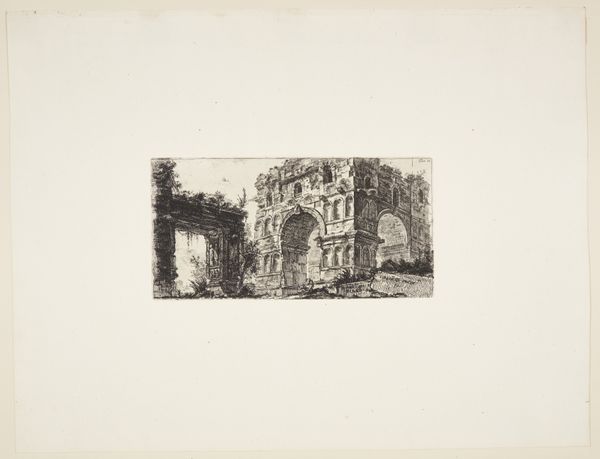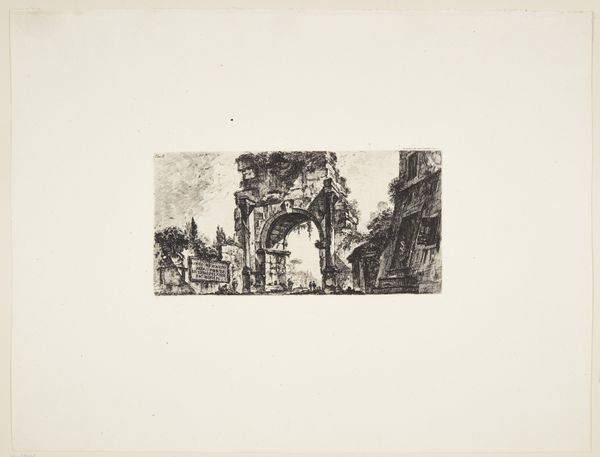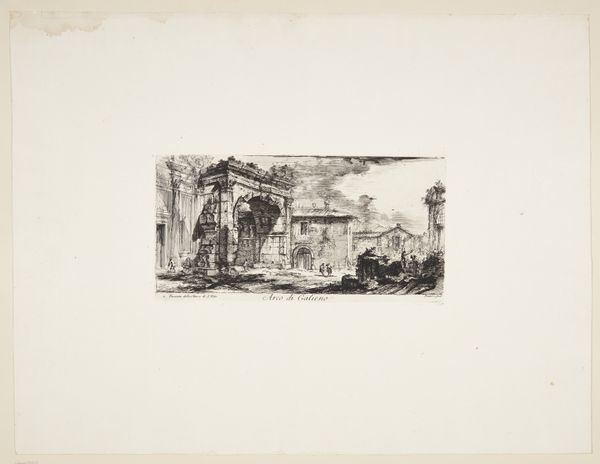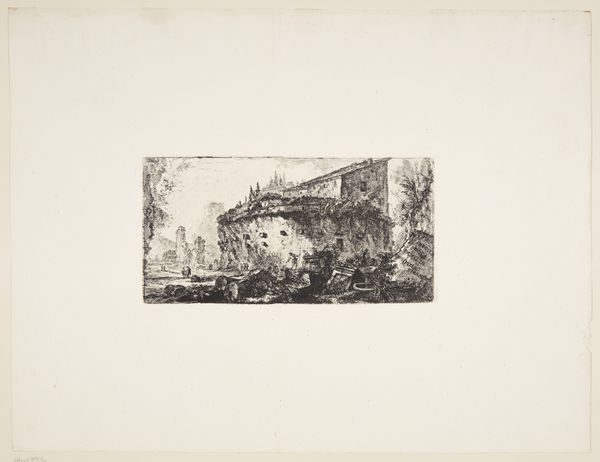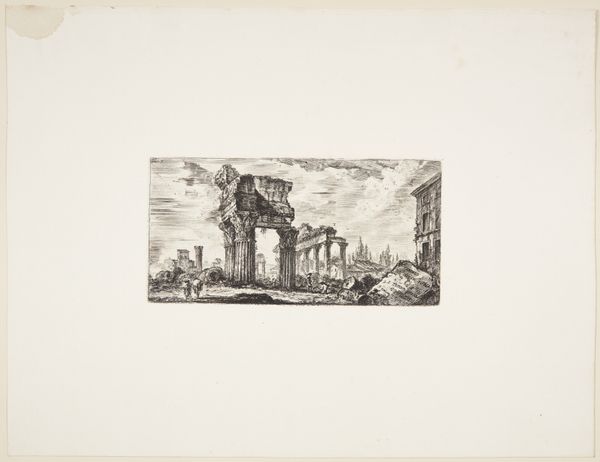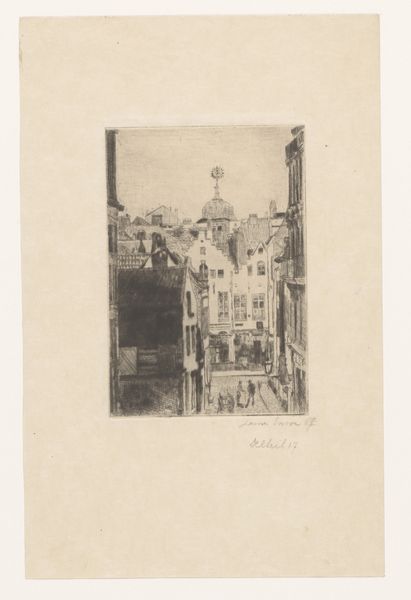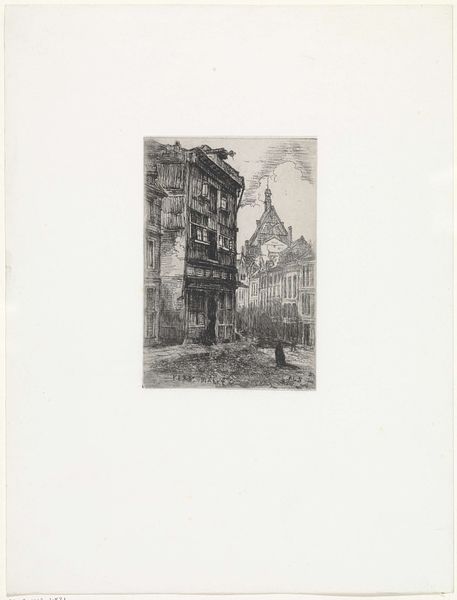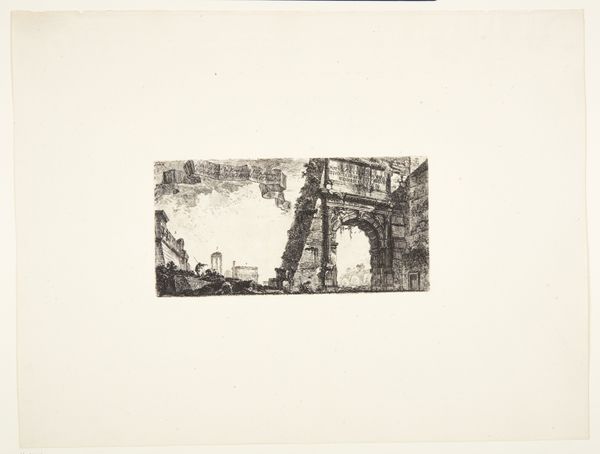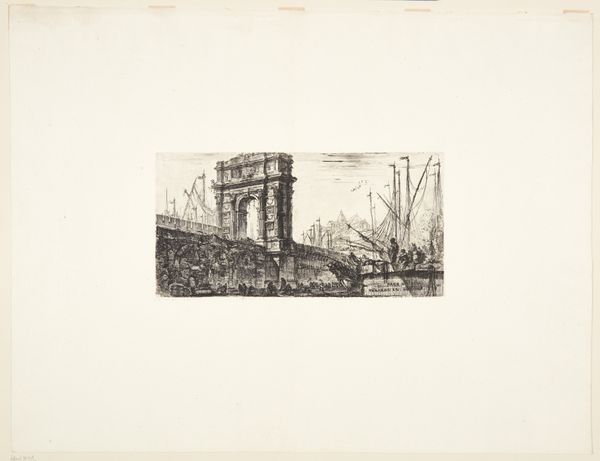
print, engraving
# print
#
landscape
#
ancient-mediterranean
#
cityscape
#
engraving
Dimensions: 135 mm (height) x 268 mm (width) (plademaal)
Editor: Here we have Giovanni Battista Piranesi's "Part of the Forum of Nerva," an engraving from 1748. There's something about the crumbling architecture that evokes a feeling of time and decay. How do you interpret this work through a historical lens? Curator: Well, Piranesi wasn't just depicting ancient Rome; he was actively shaping its image for a contemporary audience. Think about it: prints like this were disseminated widely, influencing perceptions of Roman grandeur. This image showcases the Forum of Nerva not as a pristine, idealized monument, but as a ruin, a testament to the passage of time. What statement do you think this made about the relationship between the present and the past? Editor: It's like he’s reminding people of Rome's past power, even while showing its current state of ruin. Almost like a memento mori on a grand, civic scale. Curator: Precisely. And consider the audience. This was during the Grand Tour era. Educated Europeans flocked to Rome, seeking firsthand experience of classical civilization. Piranesi’s prints catered to this market, but also offered a particular perspective. He was creating a visual narrative about the city and its legacy, packaged for consumption. To what extent, do you think, were these prints creating a "packaged" or "staged" idea of Roman history for visitors? Editor: It sounds like he was selling not just images, but also a romantic, slightly melancholy vision of history that became influential. Curator: Exactly. And remember, the print itself becomes part of the Forum’s history, shaping how it’s understood even today. The relationship between artist, subject, audience, and institution becomes a complex interplay across time. I find it incredible to think of all those people seeing, reacting, and changing over the past hundreds of years because of it. Editor: Thanks! That helps me see beyond just the pretty cityscape to understand the image's broader social impact and how it participated in its own cultural moment.
Comments
No comments
Be the first to comment and join the conversation on the ultimate creative platform.


